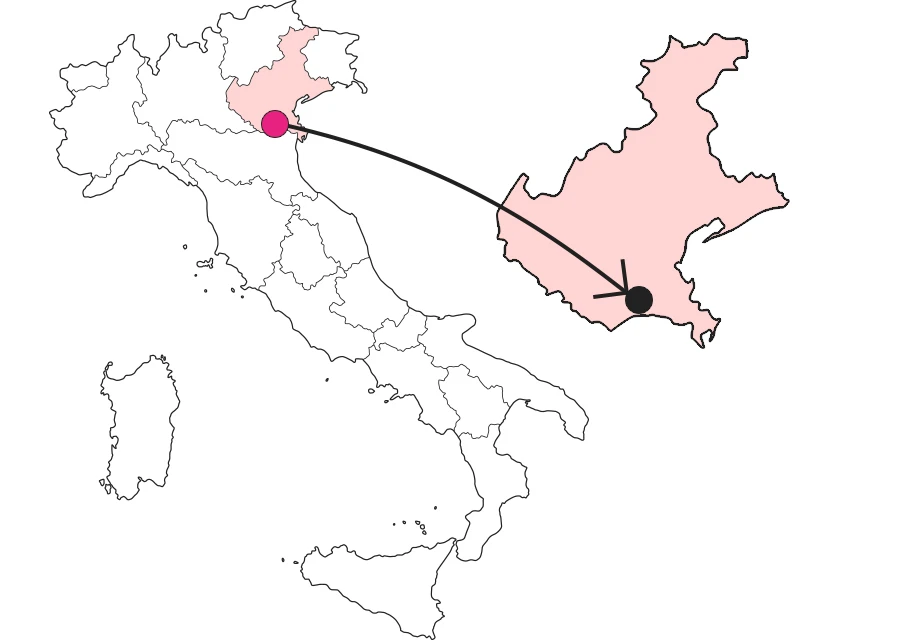SHARRYLAND


Scano Boa, the last frontier of the Delta
Boat trip to a place out of time that inspired a novel and a neorealist film



Where is

What it is and where it is
The vocabulary says it: a scanno is that bar of sand that a river forms at the outer limit of its mouth; it often appears after a flood, that is, when the strong flood current drags a lot of suspended material with it, and it may disappear with the first swell, dismantled by the waves, but in the long run it is in the order of things that it consolidates by advancing the coastline. It does not take long for a cordon of dunes colonized by pioneer plants to form, preparing the ground for more structured plants, such as tamarisk and junipers, with all that gradually follows in terms of fauna. As for the Po Delta, its entire outer front is hemmed in with sandbars, frequented mostly by seabirds and the naturalists in their wake, but only one, Scano Boa (sic, in local parlance), just off the mouth of the Po di Pila, enjoys literary and cinematic celebrity.
Why it is special
The sandbars of the Delta, so far from the world, are uninhabited, but there was a not-too-distant past when they were reached for a reason of exceptional interest, sturgeon fishing, knowing of the instinct that in late spring drives them from the sea to the river to spawn there. The sturgeon is known to most for its precious caviar, the egg preserve made from it, but at one time its meat was also the non plus ultra of fish cuisine. Suffice it to say that recipes elaborated by Renaissance cooks endure in the Po Valley tradition: in the Veneto region, for example, sturgeon in boiling water with capers and raisins. Here, then, that catching a big one - we are talking about behemoths of a few quintals! - could be the luck of an entire season, or its misfortune if the bet ended badly. A frontier fishery, often practiced by adventurers in fierce competition with each other to cast their nets in the few propitious passages.
Not to be missed
Landing at Scano Boa, half-hidden among the tamarisk trees is a casone that is said to have witnessed the epic of the sturgeon fishermen: the walls and roof are tarped, the only part in masonry is the chimney that extends toward the tall chimney pot. Already the transshipment from Ca' Tiepolo to the scanno was exciting, sailing first on the great river, now close to the mouth, and then penetrating through the reeds that open to a sequence of coastal lagoons. Then there is the beach, in its natural state, and it could not be otherwise, so far advanced into the sea, cluttered with logs carried by the river and bleached by the sun. In the sky, flights of white sea swallows, which then swoop headlong over a fish. And then oystercatchers, in their black livery, their beaks the color of coral, watchful ladies of the windswept dunes.
A bit of history
Traveling with a book under one's arm, so it is customary to say when a visit can benefit from reading about it. In the present case it is a 1961 book with the lapidary title, Scano Boa. Author, Gian Antonio Cibotto (1925-2017), one of the historical journalists of the Gazzettino di Rovigo who liked to call himself an 'extinct' writer, that is, proclaiming himself a stranger to present-day society and irresistibly attracted to the sphere of memory. So much so that around the legendary figure of the sturgeon fisherman he wove a story set on this small island on the edge of reality. The incipit says it all: "Warning: it is useless to search the map for the locations named in this book.... Geographical accuracy is but an illusion. The Po Delta, for example, does not exist. The same is true, all the more so, for Scano Boa. I know it, I lived there."
Trivia
A film, Scano Boa - Violence on the River, would be made from Cibotto's novel, which made some headlines in the early 1960s. The black-and-white transposition by Renato Dall'Ara, a filmmaker in the force of Neorealism, exploits a local news episode-in the same boat carrying a dead man, the only way to reach the cemetery, a young woman gives birth to a baby-grafting it onto a darkly hued plot that draws on the sturgeon epic in the far Delta. Cinema, it is known, often takes a liking to frontier stories, and the case of Scano Boa offers one of extraordinary intensity in a Polesine key. Opening scene at the fish market: a huge sturgeon is being sold for two thousand liras, a fabulous sum, and the director dwells at length on the matchmaker flicking the bills into the hands of the lucky fisherman under the incredulous eyes of the onlookers...
Enter the Map of Italy's Undiscovered Wonders and find treasures where you least expect it... Inspire, Recommend, Share...
Contact
Collections
The Map thanks:
Enter the Map of Italy's Undiscovered Wonders and find treasures where you least expect it... Inspire, Recommend, Share...
Where is

Contact
Collections

